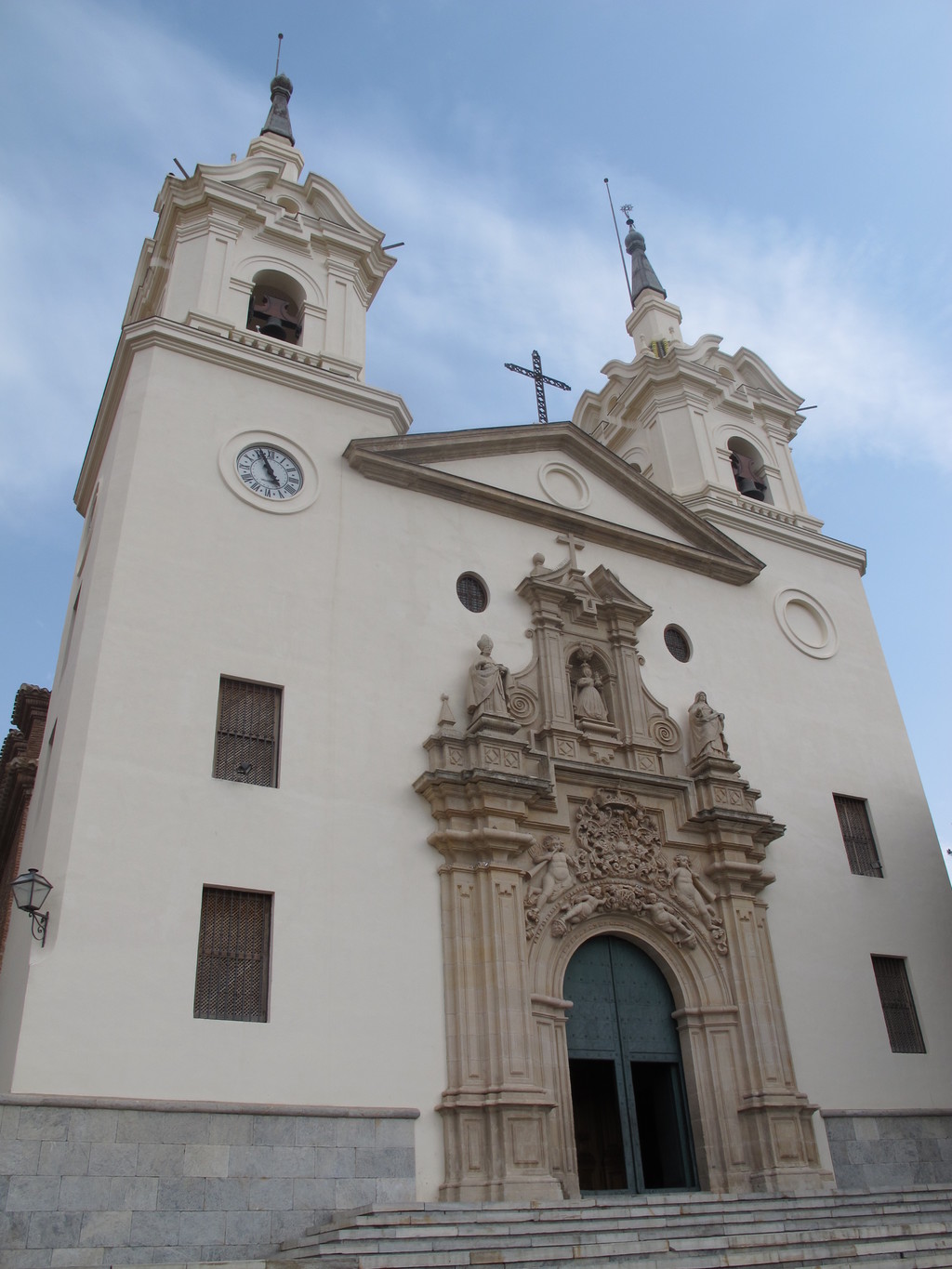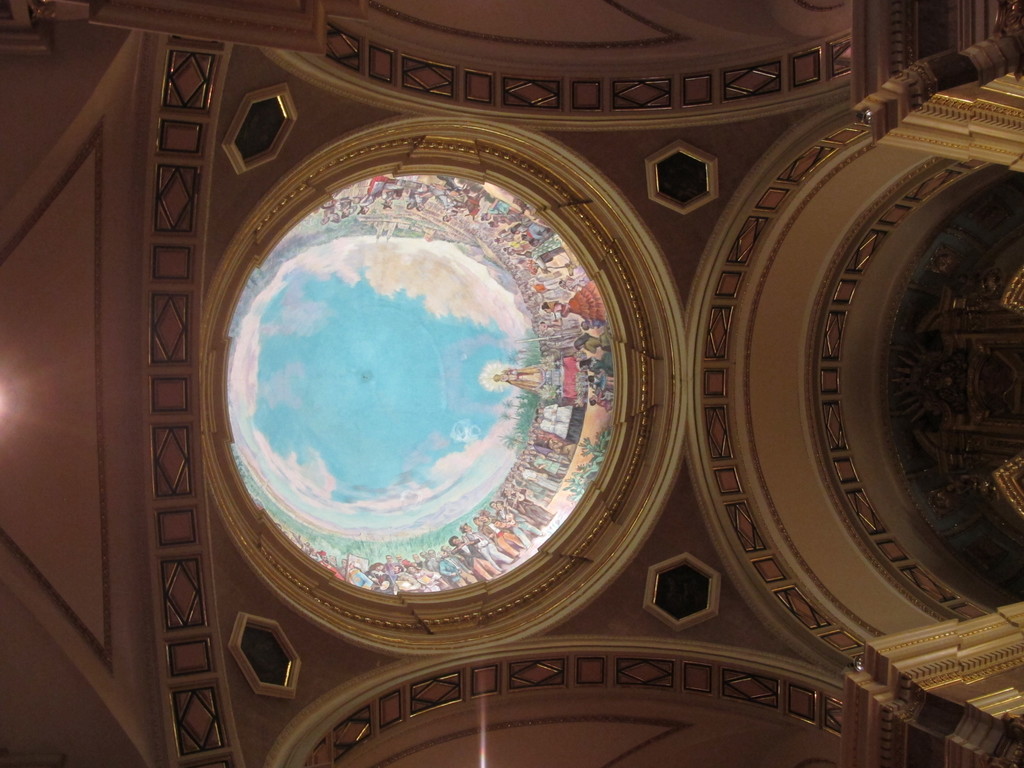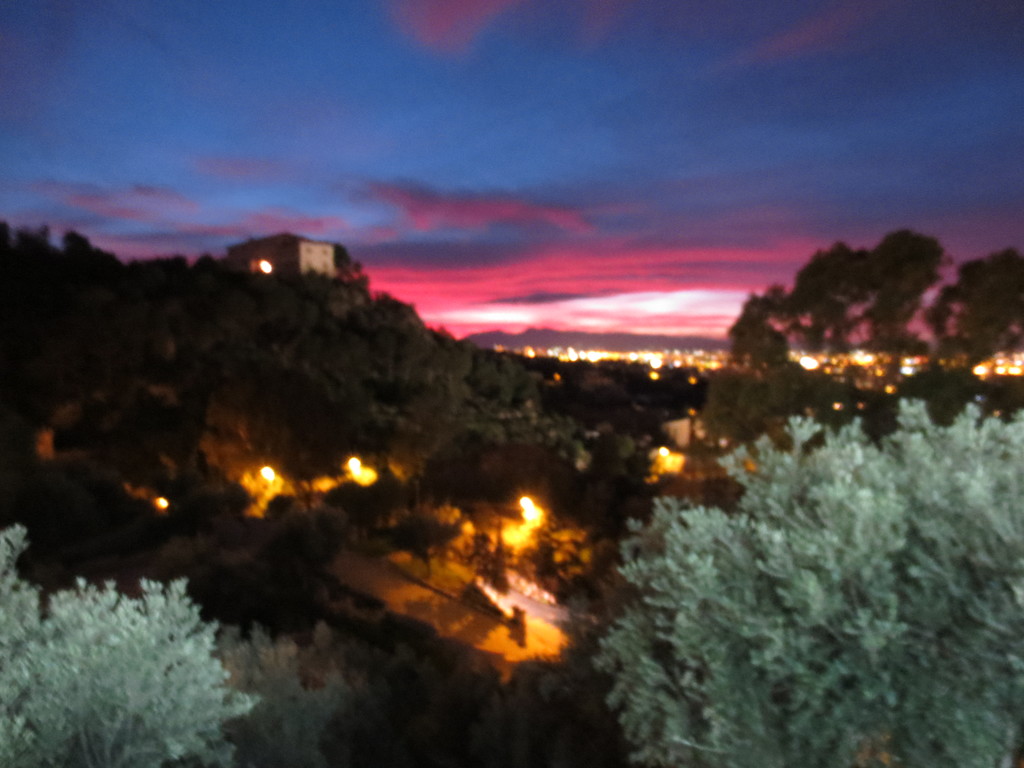The Shrine of Murcia's Patron Saint
- Address: Santuario de la fuensanta
- Tags:
 What to see Murcia,
Murcia,
Spain
What to see Murcia,
Murcia,
Spain
The Shrine of Murcia's Patron Saint
Introduction
The Shrine of Our Lady of Fuensanta is one of the most important and most visited tourist and religious attractions in the region of Murcia. It is located in the Regional Park of Carrascoy and the Valley, in Algezares, dominating the Murcian plain from its position on the side of the mountain facing the city. It seems as if the shrine is watching over the city, and Murcians have a great love and admiration for the place.
A bit of history
The Shrine of Fuensanta dates back to the end of the seventeenth century, and was constructed on the remains of an old medieval shrine. The building is in the Barroque style, and is the home of Murcia's patron saint, the Virgin of Fuensanta. At the time the shrine was built, there had been a great drought, and when the faithful began to pray to the Virgin instead of making pilgrimages to the temple, the drought soon disappeared. This occurrence was repeated several times, and so the Virgin of Fuensanta became the patron saint of Murcia and its fertile lands, the 'huerta'. The shrine suffered much damage during the Spanish Civil War, and its interior had to be completely renovated as a result.

The Virgin of Fuensanta is moved to Murcia Cathedral twice a year: once during the Festivals of Murcia, which take place during the first half of September, and again during the Spring Festivals in the week after Easter. The most important pilgrimage is the one which follows the Virgin of Fuensanta's journey back to the shrine at the end of the Festivals of Murcia, usually on the 2nd or 3rd of September. This day is a public holiday and festival day in Murcia, and many Murcians complete the journey from the Cathedral to the shrine on the mountain on foot, following the Virgin's progress. When the Virgin enters the Cathedral and the shrine, everyone present applauds, and some even cry to express their devotion. I'm not religious myself, but it's a beautiful thing to witness and you really feel the emotion of the moment.
The Shrine of Our Lady of Fuensanta
The Shrine of Fuensanta belongs to the Diocese of Cartagena, as is Murcia Cathedral.
The shrine's front facade is white with touches of gold-yellow. The building has two side towers, and is quite beautiful despite not being very intricately decorated. The front entrance features a statue of the Virgin of Fuensanta, designed by Jaime Bort (famous also for having designed Murcia Cathedral). Surrounding the figure are two angels holding Murcia's coat of arms, and on either side stand statues of San Fulgenico and San Patricio. The latter is also the patron saint of Murcia, although I'm unsure as to why San Fulgencio is also there. In addition to this, if you step away from the facade, you can appreciate the dome in the centre of the church.

The shrine's interior is also very attractive, and worth visiting especially after having climbed up the mountain. On the one hand, a painting on the inside of the dome by Pedro García stands out inside the shrine, quite a Murcian piece as it shows the pilgrimages and coronation of the Fuensanta on Puente de los Peligros in Murcia. On the other, the church's high altar is very impressive, gold in colour and adorned with flowers, and presided over by a sculpture of the Virgin of Fuensanta.

The shrine is small to medium-sized, so it doesn't take long to visit it. Don't forget to look up, however, and admire the roof paintings.
Other places of interest nearby
The building next to the shrine which contrasts with its white outside is the Benedictine Monastery. This building is rectangular in shape, has two or three floors and is brown in colour, with its main door white in colour and with relieves. Its facade has several windows and many visitors probably presume it is part of the Fuensanta Shrine.
Then we have the House of Church Incumbents, 100 metres away from the Fuensanta Shrine and from the monastery. It is reached via a ramp to the left. The building has three floors, has the appearance of a normal house and was built in Neo-Arabic style.
The Fuente Santa (Holy Fountain) is the name of a nearby water feature. This beautiful fountain was built in Renaissance style, and a statue of the Virgin Mary and child stands in the middle. A marble plaque can be found on the lower part with an inscription which I won't repeat here so that you can read it yourself and out loud when you are there. The water is known as the 'water of the Virgin', and in olden days pilgrims would journey to the fountain to be cured of their ailments.
Quitapesares
The bar named 'Quitapesares' ('Leave your worries behind') is one of the most famous in Murcia, not because of the food and drink it serves, but because of its terrace offering the best views in Murcia. It is located a few metres away from the Fuensanta Shrine, and is a refreshment stand-style bar with tables on one side enjoying a view of the shrine, and on the other a view of Murcia city.
It isn't a bar which takes advantage of its location and is expensive, instead it has a normal quality to price ratio, and the views it offers are definitely the best thing it has to offer. There's nothing more Murcian than drinking an Estrella de Levante while eating a 'marinera' (a kind of seafood rice), with the patron saint of Murcia a few metres away and the whole of Murcia at your feet. If you're from Murcia, you have to do this at least once in your life, and if you're not, it's something you have to do during your stay in Murcia - your visit will be incomplete without it!

The bar serves various tapas and other Murcian specialties, but unfortunately I can't recommend much to you, since the first time I went there we ordered the typical dishes: roast potatoes with garlic and marineras with anchovies (mine minus the anchovies), and the second time, I just ordered a beer so I could have an excuse to sit on the terrace and watch dusk fall (and as you can see from the photo, it was definitely worth it).
Personal opinion and experience
If I'm honest with you, the Fuensanta Shrine has been on my doorstep all the years I have lived in Murcia, yet it was only last year that I became interested in the site and began to actually appreciate it. This occurred when my Erasmus friends came to visit me in Murcia - my Japanese and Taiwanese friends came on separate occasions, and I had to find something touristy to do with them in Murcia and chose the shrine just as something to do, not because I thought it was an important place. Thanks to them though, I discovered a treasure in Murcia I'd never appreciated before, and they were amazed by the views.
For one thing, the shrine is beautiful on the inside, the most impressive features being the golden altar and the painting on the dome, the latter being especially Murcian as I remember having seen paintings of farmers from the Murcian 'huerta' wearing traditional dress on it. The views of Murcia really are impressive - it's no New York-style skyline, but it's a must-see, and the sky looks spectacular from up there. You can breathe fresh air and relax away from the hustle and bustle which comes with living in a city, though Murcia is quite a quiet one.

When I visited with one of my friends, we had to wait a while until they turned the lights on in the church so we could see the inside better. I think they turn the lights on around 5. 30pm, since Mass begins shortly after. While we were waiting, I had to laugh at the hilarious thing my friend from Taiwan did, which just showed the huge cultural differences which exist in our world: she thought it was perfectly OK to take a photo of a priest giving confession. They didn't say anything to her, and I don't think they even noticed she did it, but I felt so embarrassed afterwards!
I recommend that you visit on a day where the shrine won't be full of tourists or Murcians, so basically not at the weekend. The best times of day to visit are mealtimes so that you can take advantage of Quitapesares' terrace and the Murcian sunshine, or at dusk, my favourite time of day.
In terms of whether you should or shouldn't take part in the pilgrimage which happens twice a year, I'm not sure what I should tell you. I did it once and the experience really stuck with me: it was a very long and hard journey, and I had to get up quite early in the morning, which was difficult for me as I was a teenager at the time. However, I don't regret having done it, and I think that every Murcian has to do it at least once in their life, religious or not. What makes it better is to do it with good friends who are also in relatively good shape so that you have a more pleasant journey.
Opening hours and prices
The Fuensanta Shrine is open from Monday to Sunday from 9am to 1pm, and then again from 4pm und 6. 30pm. The mass timetable can be found online, I'm not too clued up about it.
There is no entrance fee to visit the shrine, though you are encourage to make a donation to the church, or buy something from the souvenir shop which can be found at the side of the archway which connects the shrine to the Benedictine monastery. My friend bought some postcards of Murcia while I enjoyed some free sugared almonds.
How to get to the Fuensanta Shrine
The best way of getting to the shrine is by car if you're not making the pilgrimage, or by bus.
If you're travelling by car, the best thing to do is to go via Ronda Norte and turn left at the fork in the road, follow the signs for A-30/Cartagena and progress onto the A-30. Later on, take exit 148 towards La Alberca/El Palmar/Virgen de la Arrixaca and continue on in the direction of Avenida del Palmar, until you arrive at Calle Costera Sur. When you see Calle Buitre, turn onto it and it will eventually become Calle Nuestra Señora de la Fuensanta. Follow the signs for the shrine. Remember that you'll have to drive on the mountain roads, which aren't dangerous, but you do need to take care on the blind turns. It's not the same as driving in flat areas.
Another option for those who don't have a car is to catch the bus. The line which will take you to the shrine is, I think, number 50 and is run buy LATBUS. There could be other lines which take you to the shrine, but I'm not sure which ones they are.
Photo gallery
Content available in other languages
- Español: El Santuario de la Patrona de Murcia
- Français: Le Sanctuaire de la Sainte Patronne de Murcie
- Italiano: Il Santuario della Patrona di Murcia
Rate and comment about this place!
Do you know The Shrine of Murcia's Patron Saint? Share your opinion about this place.






















